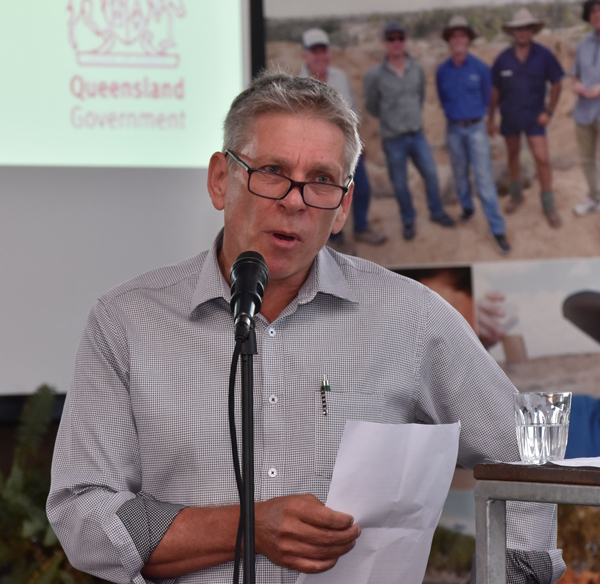Work has started on a project to tackle erosion, boost grazing productivity and improve Reef water quality in the Burdekin.
The groundbreaking Landholders Driving Change project is combining graziers’ knowledge with the latest scientific research to achieve more sustainable long-term land management in the Bowen and Collinsville area.
For the next three years, the project will work with the grazing community and other local landholders on measures to fix gullies, and make it easier to adopt practices that keep precious soil on the land.
Queensland Environment Minister Steven Miles last week officially launched Landholders Driving Change – one of two Queensland Government-funded Major Integrated Projects (MIPs) – following an intensive six-month design phase.

Dr Scott Crawford, CEO NQ Dry Tropics at the launch of the Landholders Driving Change project.
NQ Dry Tropics CEO Dr Scott Crawford said that every project activity to be rolled out came from ideas put forward by local graziers.
“At the start of this year, we asked local landowners what they thought were the best ways to tackle erosion and improve land management, productivity and water quality,”he said.
“They proposed on-ground gully remediation, improving pasture cover, training opportunities, incentives to support better practices, and closer links with policy makers to reduce red tape that could be preventing practice change.
“They stressed that gully erosion isn’t just a grazier issue, and other landholders and land users including mines, national parks, council and utilities should be involved with the project.
“Five graziers also joined the project design team that developed these ideas into the plan we are now putting into action. What’s new and exciting is that we are trialling and developing a range of solutions to tackle erosion from a high-priority catchment,” Dr Crawford said.
He added that the project is targeting the Bowen, Broken, Bogie catchment, which produces almost a quarter of the fine sediment that ends up on the Reef.
“Erosion from the land muddies local waterways, and contains fine sediment particles that reduce available light which coral and seagrass need to survive”, he said.
Bristow Hughes, from Strathalbyn Station, Bowen River, was one of the graziers who helped bring the ideas to life. He said: “They actually asked the landholders what can be done to reduce erosion and sediment runoff, rather than somebody in Brisbane or Canberra telling us how to manage our land.”
“It’s been great working alongside the technical experts and scientists. They seem to be just as focused on improving grazing productivity as they are on reducing sediment runoff to the reef”, Mr Hughes said.
Main photo: Bristow Hughes (Strathalbyn Station) was one of the graziers who helped design the project activities that will roll out over the next three years.
